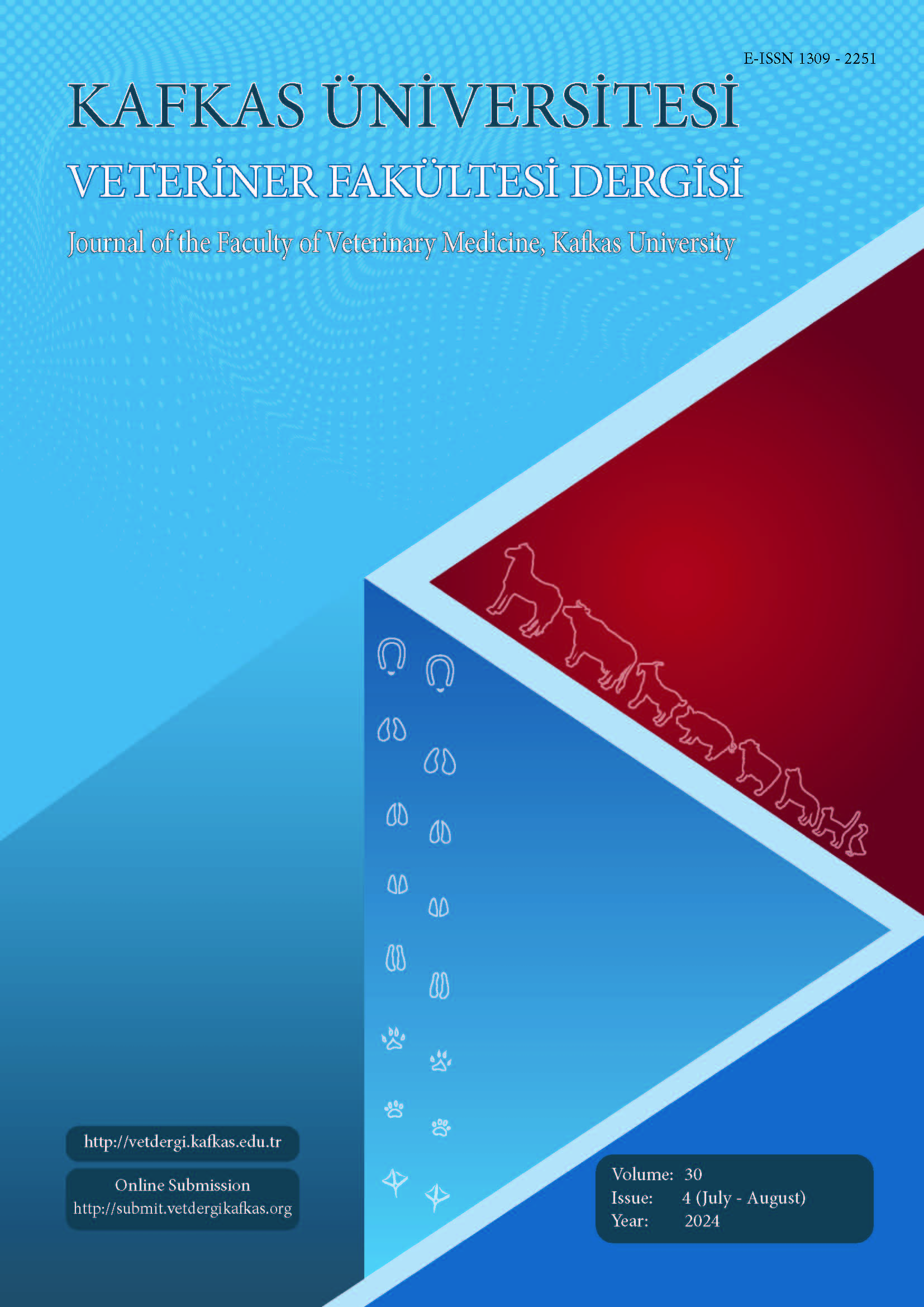
This journal is licensed under a Creative Commons Attribution-NonCommercial 4.0 International License
Kafkas Üniversitesi Veteriner Fakültesi Dergisi
2024 , Vol 30 , Issue 4
Evaluation of the Characteristics of Congenital Portosystemic Shunts in Dogs and Cats Using Computerised Tomography Angiography and Brain Magnetic Resonance Imaging
1Istanbul Üniversity-Cerrahpaşa, Institute of Graduate Studies, TR-34315 İstanbul - TÜRKİYE2Istanbul University-Cerrahpasa, Faculty of Veterinary Medicine, Surgery Department, TR-34315 İstanbul - TÜRKİYE
3Istanbul University-Cerrahpaşa, Faculty of Veterinary Medicine, Plant and Animal Production Department, TR-34315 İstanbul - TÜRKİYE DOI : 10.9775/kvfd.2024.31823 Portosystemic shunts (PSS) are abnormal vessels that allow blood to bypass the liver, leading to a variety of clinical symptoms due to the lack of normal hepatic metabolism. Imaging modalities like Computed Tomography Angiography (CTA) and Magnetic Resonance Imaging (MRI) are critical in the diagnosis and characterization of PSS. Nine animals, with clinical presentations suggestive of CPSS, underwent CTA and brain MRI. The CTA was performed using a 32-detector CT unit, and MRI scans were conducted on a 1.5 Tesla Siemens Magnetom Avanto system. Six cases of extrahepatic portosystemic shunts (EPSS) and three intrahepatic shunts (IHPSS) were diagnosed. MRI findings included brain atrophy and white matter hyperintensities, correlating with the type of shunt. The study demonstrates the value of MRI in identifying specific brain changes associated with CPSS. Advanced imaging techniques are indispensable for the accurate diagnosis of CPSS. The study"s findings reinforce the need for further research with a larger cohort to establish a stronger correlation between CPSS types and brain MRI changes, aiming to enhance clinical management for affected animals. Keywords : Cat, Computed tomography, Congenital portosystemic shunt, Dog, Magnetic resonance imaging










